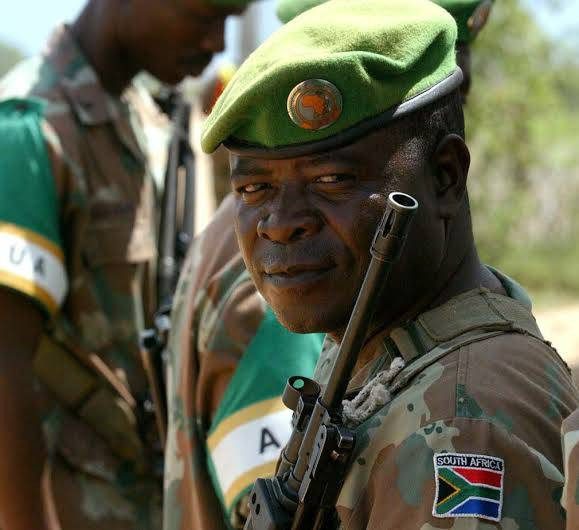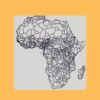The United Nations peacekeeping mission in the Democratic Republic of Congo (DRC), Monusco, is ending after 20 years. It will be replaced by troops from the Southern African Development Community (SADC), led by the South African military. Thomas Mandrup, an expert in African security governance and South African military and foreign policy, recently wrote a paper on the subject. We asked him about the new mission and what awaits it.
What prompted the deployment?
The security situation in the eastern DRC has deteriorated in recent months, and criticism has been raised against the UN force, Monusco, which was due to start its drawdown shortly after the national elections on 20 December.
There was also increased frustration with the East African Community Regional Force because of its lack of positive impact on the security situation in the eastern DRC. In addition, there was competition between the East African Community and SADC member states for future influence in the DRC.
The DRC became a member of the East Africa Community in 2022 and has historical trade relations with east Africa.
What challenges await the SADC mission?
The SADC mission in the DRC – which carries the acronym (SAMIDRC) – is expected to replace the East African Community Regional Force and help the national security forces in fighting especially the M23 rebels, a group allegedly supported by Rwanda.
The SADC force is expected to attempt, in cooperation with the local security forces, to neutralise the main rebel groups operating in the eastern DRC. This is something that Monusco and the East African Community Regional Force have not been able to do for the last 20 years.
The rebel groups have operated in that area for many years, know the terrain, and are integrated with the local population.
The lessons learned from the SADC/Monusco Force Intervention Brigade show that the new intervention force must be sizeable, and have proper air cover as well as transport and air elements. It must also have special forces capabilities, and mobility in very difficult terrain. Also required are tactical and operational intelligence and enough fire-power.
In addition, a SADC internal document is instructive: it says the regional force found it difficult to fulfil its mandate of disarming the Al-Sunnah insurgents in Mozambique because of a lack of a clear mandate and the necessary capabilities.
What role will the South African National Defence Force play? What resources does it have?
Post-apartheid South Africa has played a central role as a mediator and peacemaker in Africa. The DRC has been at the centre of these efforts. The South African National Defence Force will lead the SADC intervention force. However, the South African National Defence Force is overstretched and underfunded and has been for a long time.
There is a discrepancy between what the politicians want it to do and the resources available for this. In addition, the South African government has increasingly used the military for domestic security and policing tasks while also deploying soldiers and equipment in complex international peace missions, including combat missions in the DRC and Mozambique and ad hoc shorter international deployments.
The South African National Defence Force faces a host of challenges. The politicians are seemingly unwilling to prioritise its tasks. Instead of releasing forces by closing one operation, the force is expected to handle an ever increasing number of tasks and deployments at the same time. Many of these are of a more civilian nature, such as sending out army engineers to stop the pollution of the Vaal River or protecting installations of Eskom, the power utility, without additional funding.
The defence force has problems keeping its equipment operational and has, for instance, only one operational C-130 transport aircraft. It has only a few helicopters available for all domestic and international missions – five Oryx, out of an initial 39, and three Rooivalk, out of 11.
Hence it will not be able to provide the much-needed air transport and air cover for offensive operations. The soldiers will have to use road transport in the DRC. But the country has very limited functional roads, making it especially difficult to operate and move around during the rainy season.
The specialised elements and mobile elements, like the paratroops, the reconaissance units and the Special Forces, which can be effective against groups like the M23, are overstretched to such an extent that it negatively affects their operational readiness.
The reserve force, in principle numbering 19,000, constitutes an important augmenting tool for the permanent force. Due to personnel shortages, the reserve force has increasingly been used for both domestic and international deployments.
However, it is ageing and only at half its supposed strength. The average age of the personnel is 46 years old, which is a big operational challenge. Active soldiers should be young and fit. Ideally the majority of the force (private-level) should be 25 or younger. Officers and non-commissioned officers will have a higher average age.
The South African National Defence Force has reached a stage where it can no longer continue to deploy without significant additional funding and intake of recruits. The force will also have to take a critical look at its institutional structure and set-up. It has too many expensive senior officers, and too few young deployable soldiers.
What are the risks?

The risks are multifaceted. If the needed funding is not secured, the troop contributing countries will have to fund the missions from their own budgets. The SADC mission in Mozambique, for instance, has struggled with funding, which has hampered its operational capabilities.
The next challenge is whether the SADC member states will make the needed capabilities and equipment available to the new force, allowing it to successfully fulfil its mandate. The discrepancy between what a mission needs and what is provided has been seen in Mozambique, negatively affecting the mission’s ability to achieve its operational objectives.
In the operational area the new force will face an adversary allegedly supported by Rwanda. If the SADC force comes under-equipped or wrongly equipped, it increases the risk to the soldiers. The lessons learned from the strategic failure of the South African National Defence Force in 2013 in Central African Republic is a clear warning. Then a small bilateral South African training mission, augmented by a few hundred lightly armed special operation forces and paratrooper elements, fought a rebel force of 7,000 for two days. A small airborne element was left stranded, facing an overwhelming enemy without air cover, logistical support, heavy equipment or extraction possibilities.
It was only the bravery and skills of the deployed force that limited the number of casualties to 17. However, the mission was a strategic failure, which illustrated the limitation of the South African National Defence Force in logistically and practically supporting a force deployed several thousand kilometres away. Notably, the South African National Defence Force is in a worse shape than it was in 2013.
This article was first published on the Conversation:

